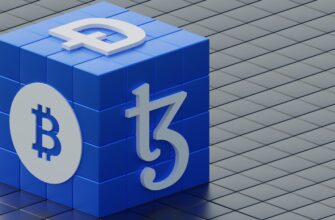- Introduction: The Digital Engine Powering Modern Money
- Blockchain: The Immutable Backbone of Crypto
- Cryptography: The Security Shield
- Consensus Mechanisms: The Agreement Engines
- Supporting Technologies Enhancing Crypto Ecosystems
- Real-World Technology Implementation: Bitcoin vs Ethereum
- Beyond Blockchain: Alternative Crypto Technologies
- Frequently Asked Questions
- Conclusion: The Evolving Tech Landscape
Introduction: The Digital Engine Powering Modern Money
Cryptocurrency has revolutionized finance, but what fuels this digital phenomenon? At its core, cryptocurrency runs on a sophisticated blend of technologies that create secure, decentralized systems. Understanding these foundations is crucial for anyone navigating the crypto landscape. This article demystifies the key technologies powering cryptocurrencies like Bitcoin and Ethereum, exploring how they work together to enable trustless transactions without central authorities.
Blockchain: The Immutable Backbone of Crypto
Blockchain technology serves as the fundamental infrastructure for most cryptocurrencies. It’s a distributed digital ledger that records transactions across thousands of computers globally. Here’s how it works:
- Decentralized Structure: No single entity controls the network, eliminating central points of failure
- Immutable Records: Once data is added to a block, it becomes virtually tamper-proof through cryptographic linking
- Transparent Verification: All participants can audit transaction histories while maintaining privacy
- Block Creation: Transactions are grouped into blocks and added to the chain in chronological order
This architecture enables cryptocurrencies to operate without banks or governments, with Bitcoin’s 2009 launch demonstrating blockchain’s revolutionary potential for value transfer.
Cryptography: The Security Shield
Advanced cryptography provides the security framework for cryptocurrency networks. Three critical components work in tandem:
- Public/Private Keys: Your public key acts as a receiving address (like an account number), while your private key is a secret code authorizing transactions
- Hash Functions: Algorithms like SHA-256 convert data into unique fixed-size codes, creating digital fingerprints for blocks
- Digital Signatures: Mathematical proofs verifying that transactions originate from legitimate key holders
This cryptographic layer ensures that only owners can spend their coins while preventing counterfeiting and double-spending – solving fundamental problems that plagued earlier digital cash attempts.
Consensus Mechanisms: The Agreement Engines
Consensus protocols enable decentralized networks to agree on valid transactions without central oversight. The two dominant models are:
- Proof of Work (PoW):
Used by Bitcoin and Litecoin
– Miners compete to solve complex math puzzles
– First to solve validates transactions and creates new blocks
– Requires massive computational power and energy - Proof of Stake (PoS):
Used by Ethereum and Cardano
– Validators are chosen based on coins “staked” as collateral
– Energy-efficient alternative to PoW
– Penalizes malicious actors through stake forfeiture
Emerging models like Delegated Proof of Stake (DPoS) and Proof of Authority (PoA) offer variations balancing speed, decentralization, and security.
Supporting Technologies Enhancing Crypto Ecosystems
Beyond the core trio, cryptocurrencies leverage additional technologies:
- Peer-to-Peer (P2P) Networks: Distributed node networks that propagate transactions without intermediaries
- Smart Contracts: Self-executing code on blockchains like Ethereum that automate agreements
- Wallet Software: Interfaces managing cryptographic keys and interacting with blockchains
- Interoperability Protocols: Solutions enabling communication between different blockchain networks
These components create robust ecosystems supporting everything from simple payments to complex decentralized applications (dApps).
Real-World Technology Implementation: Bitcoin vs Ethereum
Leading cryptocurrencies showcase distinct technological approaches:
- Bitcoin (PoW Model):
– SHA-256 hashing algorithm
– 10-minute block time
– Script programming language
– Focus: Digital gold/store of value - Ethereum (PoS Model):
– Ethash consensus algorithm
– 12-second block time
– Turing-complete Solidity language
– Focus: Programmable smart contract platform
These differences highlight how foundational technologies adapt to serve specific purposes within the crypto universe.
Beyond Blockchain: Alternative Crypto Technologies
While blockchain dominates, innovative alternatives are emerging:
- Directed Acyclic Graphs (DAGs): Used by IOTA and Nano for feeless microtransactions
- Hashgraph: A patented consensus algorithm claiming higher speed and fairness
- Holochain: Agent-centric architecture for distributed applications
These technologies explore new approaches to decentralization beyond traditional blockchain structures.
Frequently Asked Questions
Q: What is the primary technology behind cryptocurrency?
A: Blockchain serves as the core infrastructure for most cryptocurrencies, providing a decentralized, tamper-resistant ledger combined with cryptography for security and consensus mechanisms for network agreement.
Q: Can cryptocurrency work without blockchain?
A: Yes, alternatives like DAG-based systems (e.g., IOTA) operate without traditional blockchains, though blockchain remains the dominant technology.
Q: How does cryptography protect cryptocurrency?
A: Cryptography secures transactions through public-private key encryption, ensures data integrity via hashing, and authenticates users with digital signatures, preventing fraud and unauthorized access.
Q: What’s the difference between PoW and PoS?
A: Proof of Work relies on computational power to validate transactions, while Proof of Stake uses economic stakes. PoS is significantly more energy-efficient but requires validators to lock up cryptocurrency as collateral.
Q: Are all cryptocurrencies built on the same technology?
A: No, implementations vary significantly. Bitcoin uses PoW with a limited scripting language, while Ethereum features PoS with complex smart contract capabilities. Newer projects continue experimenting with novel architectures.
Conclusion: The Evolving Tech Landscape
Cryptocurrency runs on an intricate technological framework where blockchain, cryptography, and consensus mechanisms form the essential foundation. As the space evolves, innovations in scalability solutions (like sharding and layer-2 networks) and emerging architectures continue pushing boundaries. Understanding these technologies provides crucial insight into cryptocurrency’s transformative potential – not just as digital money, but as the foundation for a new internet of value.








